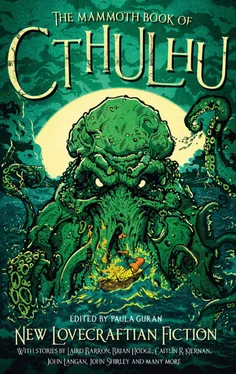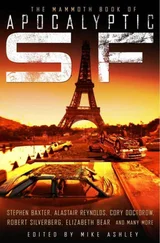“Sorry,” she said to Farooq who was fingering his mole, “but we traveled a long way for this. Most cadets go home during holidays, but they,” she pointed at the boys peering at a representation of the famous bronze Dancing Girl of Mohenjo-Daro and rows of clay urns lining the glass cases, “had no one to take them. Either their families are away or they have no families. So a few of us volunteered—”
“Yes, yes.” Farooq waved his hand impatiently. “Spare me heartbreaking accounts of army orphans. I’ll give you a quick tour. Is this your entire party? Where’s Ms. Tabinda? She’s the one who called me.”
Noor glanced to the exit. Junaid and Tabinda were setting up lunch. She felt guilty that she couldn’t help with such chores; her inability to speak Sindi prevented communication with the bus driver whose Urdu was rudimentary. She wished the older professor could at least take the tour. The Mohenjo-Daro trip was her idea.
“Seems like we’re the only ones for now.”
Farooq nodded glumly. “This way then. We’ll start with the Memories of the Ancients display.”
She nudged the cadets and they followed him up the northern corridor.
His voice echoed as they passed through an arched doorway into a long hall flanked by glass cabinets on either side. “Egypt, Mesopotamia, and Indus Valley are the three earliest civilizations of the Old World — China came later — and all, of course, developed along water bodies. We used to believe they evolved and thrived in isolation, but now we know that Indus Valley and Mesopotamia traded with each other for centuries.” He pointed left and right at carnelian necklaces, sculptures, gemstone beads, ivory combs, and brass containers with traces of herbal collyrium.
Noor’s belly cramped suddenly. Period pains? But she wasn’t due for another week. It would explain the headache she had earlier that morning. Wincing, she rubbed her abdomen.
“Discovered in 1922 by an officer of the Archaeological Survey of India, Mohenjo-Daro is thought to have been the most important city of the Indus Valley Civilization. Spread out over two hundred and fifty acres on a series of mounds, its heyday was from 2500 to 1900 BC. It was suddenly abandoned then. No one knows why.”
Noor glanced over her shoulder. The kids looked suicidally bored. They drifted behind her, listless, eyes glazed. The Pashtun boy, Dara, had his nose pressed against a cabinet, palms splayed against the glass, but she thought his reflected green stare was fixed on her. His biceps bulged on either side of his head.
“A Buddhist monastery was discovered atop the city’s main citadel. You can still see the stupa. We don’t know why the builders decided to erect it there hundreds of years after the city was abandoned, but most of Mohenjo-Daro still lies underground. The mounds grew organically over centuries as people built platforms and walls for their houses. The name Mohenjo-Daro means ‘Mounds of the Dead’ in Sindi.”
Farooq waved at a ceiling-high stucco wall covered with black-andwhite and sepia photographs. A flicker of interest went through the cadets. They crowded around aerial and ground views of the ruins.
Noor had seen these in slideshows Tabinda put on before the trip. She went to Dara who hadn’t moved. He edged left to allow her to lean against the cabinet. This close, he was taller than her. He smelled of sweat and cologne.
“I’m sorry about the other day,” she said in a low voice. “I didn’t mean to barge in on you two like that.”
The tips of Dara’s brown ears darkened. She could see the tension in his bunched neck and shoulder muscles.
“And here,” boomed the curator’s voice, “is the most famous statue found in Mohenjo-Daro. You might have seen the Priest-King’s picture in textbooks on Indus Civilization. This is a detailed replica made from a mold of the real thing kept in the National Museum in Karachi.”
“It’s okay. Really,” Noor told Dara. The boy’s fingers had closed over the edge of the cabinet. “I won’t tell anyone. Some of my friends back in the US were like you. One of them was bullied and ended up struggling with depression for years. I hated that.” Her gaze went to the cadets gathered around the pictures. What would they do if they found out about this kid or his friend currently away during winter break? She didn’t want to imagine. Seized by instinct, she lifted the corner of her hijab and hissed at him, “We all have secrets. Look .”
He didn’t turn to face her, but his eyes flicked in her direction. They widened when he saw her left shoulder.
“Some think the Priest-King is neither a king nor a man. Some believe this is in fact a woman of considerable importance to the people of Mohenjo-Daro. A high priestess or maybe a eunuch who led their religious rituals.”
“We all have secrets,” Noor said again. Dara looked at her with wary eyes. He was a quiet backbencher, rarely said a word. His grades were average. She used to wonder if he was slow.
She dropped her hijab into place.
Dara rapped a knuckle against the glass, and his eyes were green fires. “You don’t know anything,” he whispered fiercely, turned, and fled down the hall.
She watched him go, then walked back to join the cadets peering at something in a glass case. Farooq glanced up as she approached.
“So glad you could join us.” He adjusted the Sindi cap on his head. “I was just telling this young man about seal thirty-four. Dr. Gregory Fossel of University of Pennsylvania believes it represents a sacrifice ritual. Care to listen in?”
She watched him unlock the case and withdraw two artifacts. In one hand he held a reproduction of the tan soapstone seal. The boys murmured and jostled to get closer. A tall angular deity with a horned headdress and bangles on both arms stood atop a fig tree. With a gleeful face it looked down on a kneeling worshipper.
Nearby was a small stool on which lay a human head.
“Seal thirty-four is taken as evidence by some that human sacrifice was practiced as a fertility rite in this region. Similar to such offerings to Kali in certain parts of India.”
Noor looked at the seal. Below the kneeling worshipper were a giant ram and seven figures in procession. They wore single-plumed headdresses, bangles, and long skirts. The sight chilled her; it was so brutal and somber. Her belly cramped again.
“Dr. Fossel, however, has argued that the presence of Pashupati’s seal,” Farooq held up the stone in his other hand. It showed a naked figure with three grim faces and ram horns seated on a stool surrounded by deer, rhinoceros, and elephants, “means that the people of Indus had the option to proffer animals as substitute for humans.”
“Pashupati?” Someone chortled. Noor glanced up. It was Abar, the boy who had slaughtered the goat on Junaid’s orders. He had a malicious grin on his face. “What kind of faggot name is that?” He elbowed a friend.
“One of Shiva’s names.” The curator glared at him. “His incarnation as the Lord of Beasts.”
Both boys burst out laughing. A few others smiled uneasily.
“That’s enough,” Noor told the boys. Giggling, they strolled down the hall. “Sorry about that,” she said to Farooq.
His face was pinched and red. “That’s the sort of kids we’re raising now. Forget it. It’s closing time anyway.” He muttered something inaudible and led them back to the lobby.
At the exit, Noor flashed a smile and said, “Thank you for the tour. Very educational.”
He nodded and began to shut the door.
“Every place has its secret flavor,” Noor said through the door opening. “Here’s a question I always ask curators and guides.” She touched his sleeve and smiled brightly. “Tell us one thing about the site you normally wouldn’t tell visitors.”
Читать дальше












